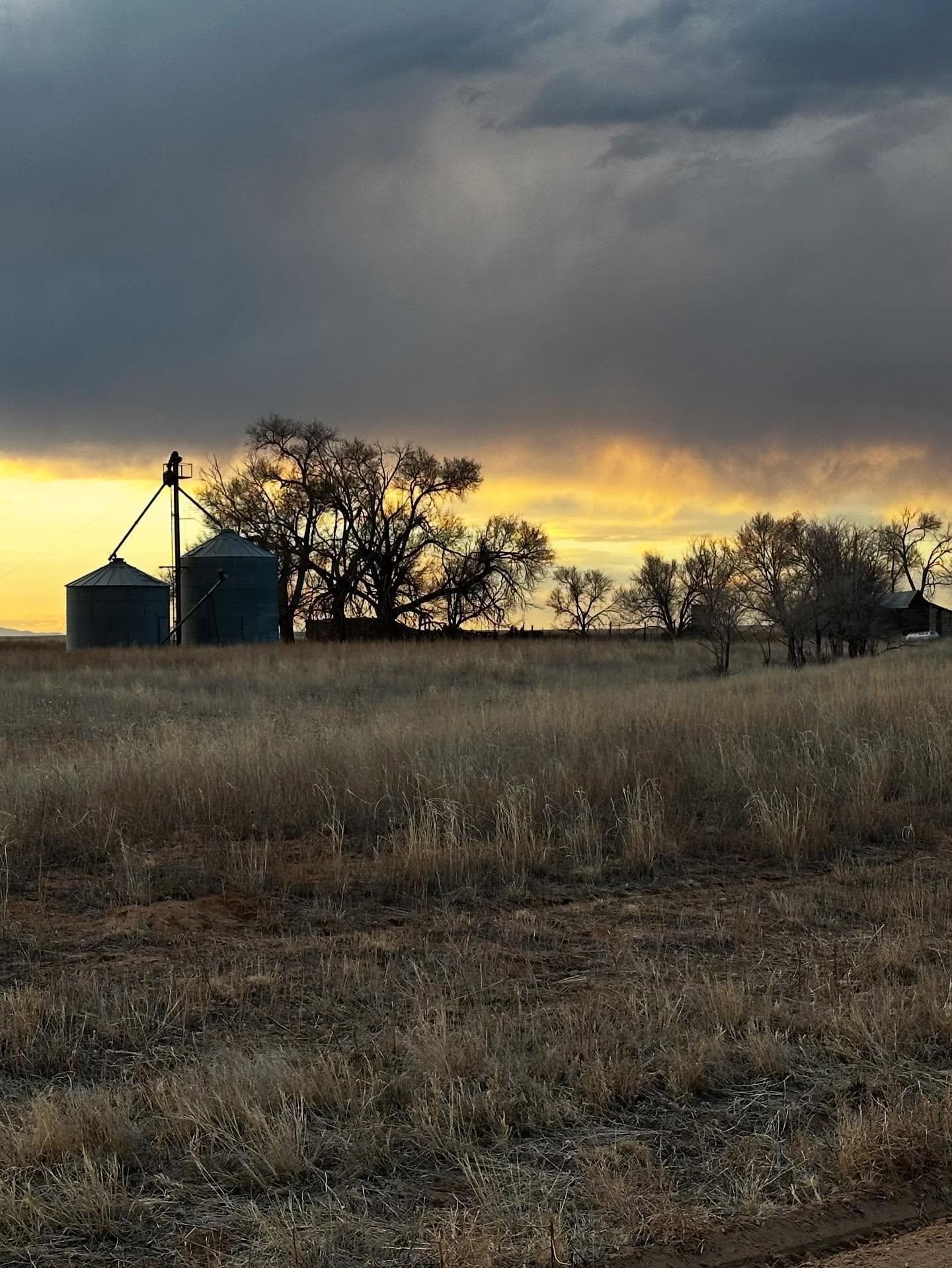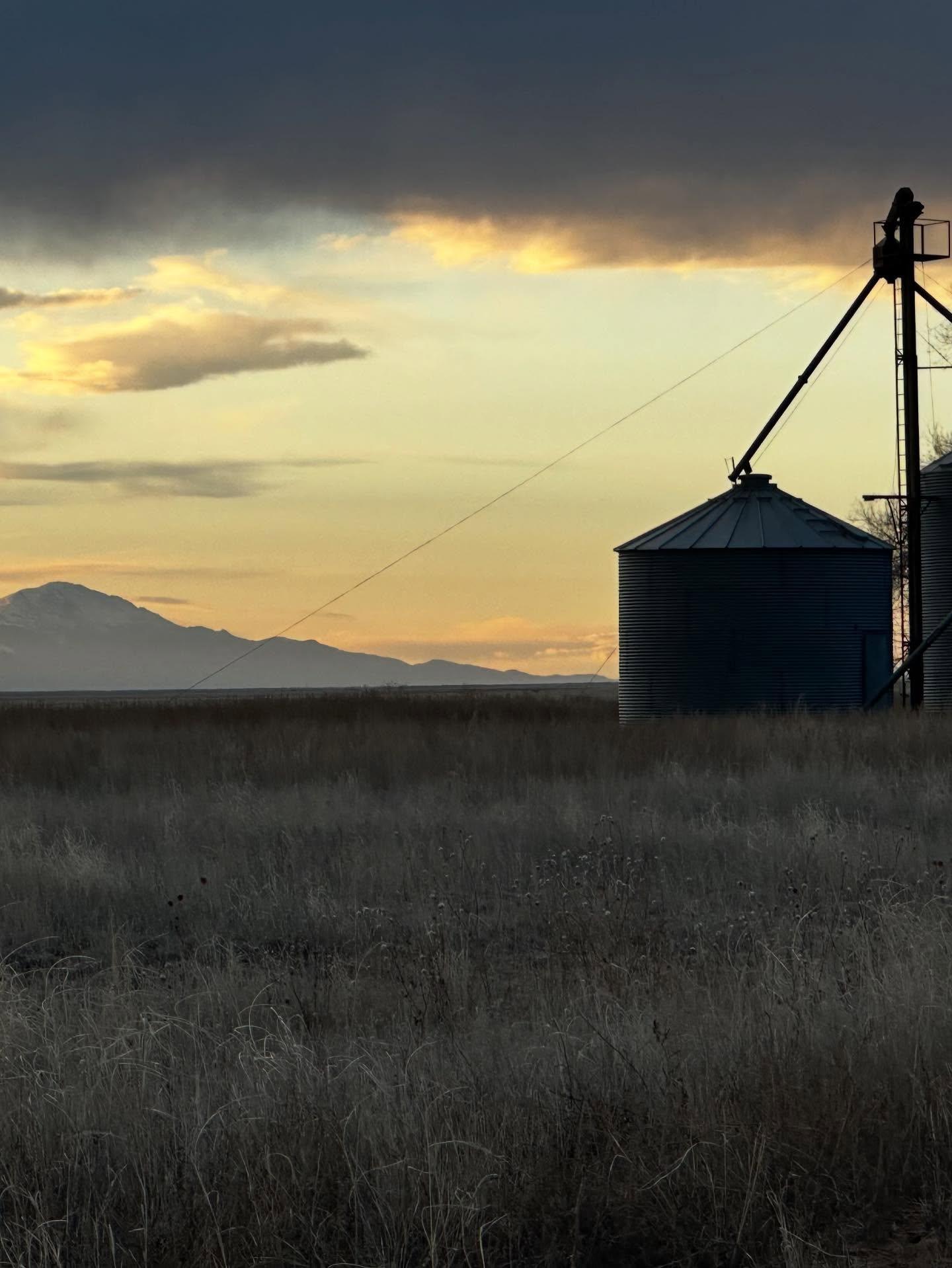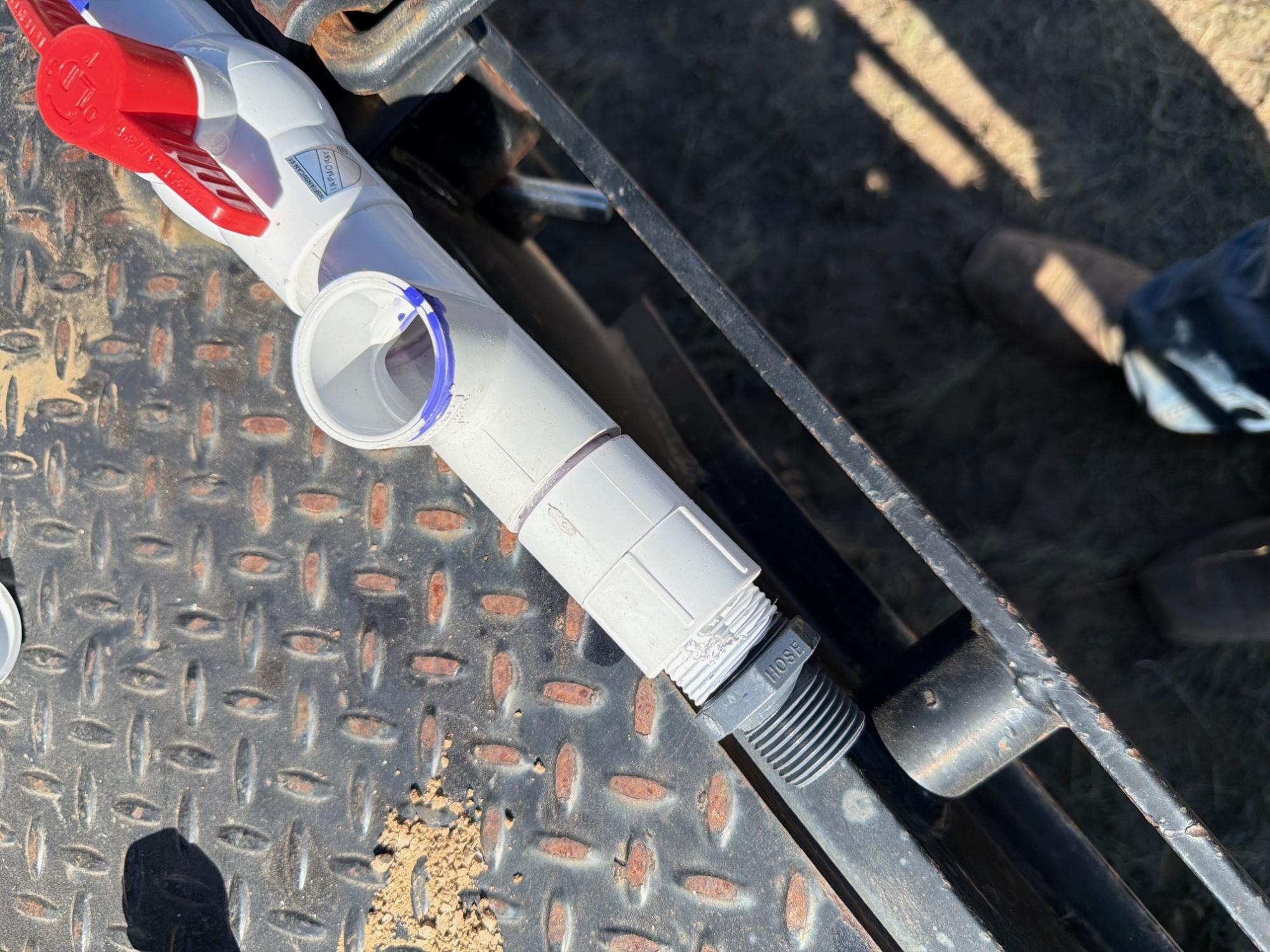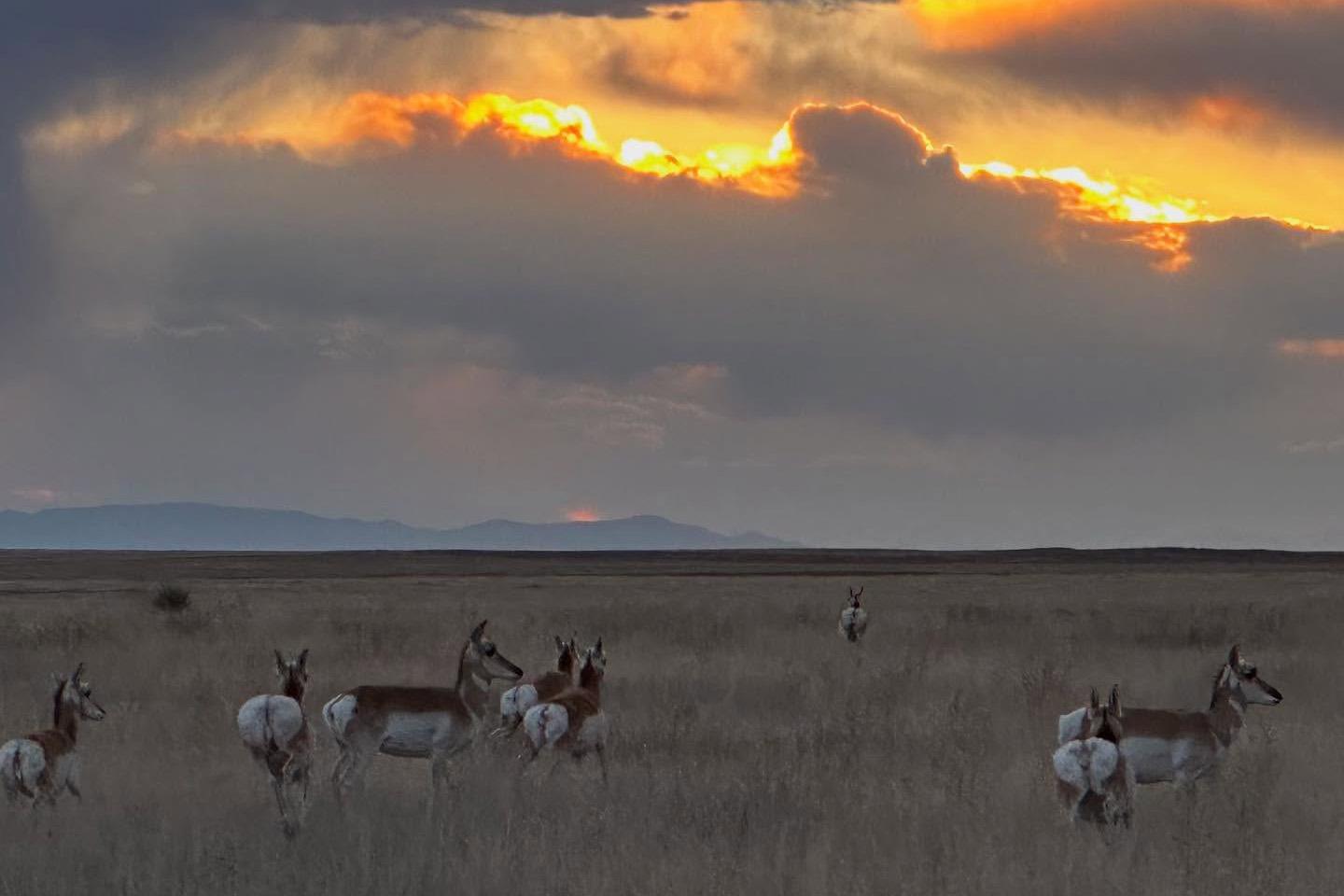As Colorado grows, protecting what makes our home special is vital.
Join us in conserving the land and water that unite us.
As the crisp fall mornings return to Pueblo County, Robert Hamilton moves his cattle across the rolling shortgrass prairie of Rocking Jar Ranch. The cattle flow across the landscape in a carefully orchestrated pattern—not randomly dispersed as in conventional ranching, but tightly grouped and frequently relocated. This choreographed movement isn't new, but rather a revival of practices as old as animal husbandry itself. Through a partnership with Palmer Land Conservancy and funding from American Farmland Trust's Soil Health Stewards program, Hamilton is testing Adaptive Multi-Paddock (AMP) grazing—an ancient practice with modern scientific backing—on his conserved ranch.
Long before barbed wire divided the American West, nomadic cultures worldwide practiced forms of intensive rotational grazing. Traditional herdspeople understood that mimicking natural migration patterns led to healthier animals and more resilient landscapes. These communities followed their herds closely, moving them frequently to prevent overgrazing and allow plants sufficient time to recover.
These practices weren't arbitrary but based on observations of wild herbivores like bison, wildebeest, and caribou, which naturally cluster tightly (for protection from predators) and move frequently (to access fresh forage). This natural pattern created a cycle of intense grazing followed by long recovery periods—precisely what modern AMP grazing seeks to recreate.
Unfortunately, with the industrialization of agriculture in the 20th century, these time-tested methods were largely abandoned in favor of continuous grazing systems that prioritized convenience over ecological health. The wisdom of generations began to fade from practice.


Photos courtesy of Robert Hamilton
When Robert Hamilton purchased Rocking Jar Ranch in northeastern Pueblo County in 2023, he saw more than just the 2,576 acres under conservation easement with Palmer Land Conservancy. He envisioned a resilient and thriving landscape through the implementation of AMP grazing practices.
"The land has potential that conventional continuous grazing methods simply can't unlock," Theron Verna, Palmer’s Land Stewardship Manager, remarked. "The Hamilton family wanted to bring back what worked for thousands of years before we started confining cattle to the same pasture year-round."
The transition wasn't without challenges. Implementing AMP grazing requires significant infrastructure changes, particularly fencing and water distribution systems to support the frequent movement of cattle. It also demands a more hands-on approach to ranch management, with livestock potentially moving to new paddocks every few days, sometimes even multiple times a day.
Yet the Hamilton family remained committed to their vision, working closely with Palmer to develop a refined grazing plan that would honor both the conservation easement and their regenerative agriculture goals. In doing so, they are joining a movement that's simultaneously ancient and innovative.
AMP grazing exists on a continuum of management intensity. At one end lies conventional continuous grazing, where cattle remain in the same pasture for extended periods with essentially no rotation. In the middle is conventional rotational grazing, where livestock might move between pastures every few weeks or months. AMP grazing represents the most intensive end of this spectrum, with cattle moving almost daily.
The science supporting this approach is compelling. Studies have demonstrated that properly managed AMP grazing can lead to remarkable improvements in ecosystem health, including:
By collecting baseline soil samples before implementing the new grazing system and planning follow-up testing in subsequent years, the Hamilton family and Palmer are creating a real-world test case—a living laboratory—for AMP grazing in the specific ecological context of northeastern Pueblo County.
While the Hamilton family brings the vision and daily management expertise to this endeavor, Palmer Land Conservancy serves as the perpetual guardian of the conservation values of the land and a partner to the Hamiltons and everyone else who will follow in their footsteps. When the Hamiltons approached Palmer about their interest in developing an AMP grazing system, the land trust didn't just approve the plan—Palmer actively partnered in its creation.
"We recognized that this project aligned perfectly with our mission of protecting land and water while enhancing their ecological value," Verna mentioned. "Robert's vision for AMP grazing represented an opportunity to demonstrate how conservation easements can support innovative agricultural practices."
With American Farmland Trust's Soil Health Stewards grant funding, Palmer helped fund the installation of three miles of buried water lines with intermittent spigots—a critical component for any AMP grazing system, as cattle need reliable water access in each paddock.

Robert Hamilton works to install a shutoff valve at one of the the intermittent spigots for his new waterline.
Implementing AMP grazing isn't without obstacles. The system requires significantly more labor than conventional grazing, with frequent monitoring of both livestock and range conditions. Developing the sensitivity to recognize when it's time to move cattle—before overgrazing occurs but after they've provided adequate disturbance—takes experience and careful observation.
The infrastructure costs present another major hurdle. Fencing and water distribution systems represent significant investments that many ranchers struggle to afford on their own. This is where the partnership model proves invaluable. By leveraging grant funding and shared expertise, Palmer and Hamilton overcame these initial barriers.

As Robert Hamilton's cattle move across the landscape in their ancient-yet-innovative pattern, the Rocking Jar Ranch project demonstrates how conservation organizations and agricultural producers can work together to implement practices that benefit both the land and those who work it.
If successful, this "living laboratory" could inspire other ranchers throughout Colorado and beyond to consider implementing similar systems. The data collected will provide valuable insights into how AMP grazing performs in this specific ecological context, potentially creating a blueprint for others to follow.
This grazing approach represents the best of both worlds—ancient wisdom about how landscapes function, supported by modern science and conservation. It's a powerful reminder that sometimes the most innovative solutions involve rediscovering what our ancestors already knew.
Learn more about Rocking Jar Ranch's mission is to produce meat that you can trust to nourish your family and purchase their pasture-raised, grass-fed beef. Follow them on Instagram, TikTok, and Facebook.